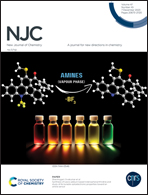Petroleum sludge ash-derived MCM-41-silver nanocomposites for enhanced photocatalysis and antimicrobial effect in water treatment
Abstract
This study introduces a cost-effective methodology to synthesize Ag@MCM-41 composites, utilizing petroleum sludge ash as a precursor. These nanomaterials exhibit well-structured arrangements and hold tremendous promise for applications in both photocatalysis and antimicrobial activities within the context of water treatment. The catalysts were subjected to thorough characterization using techniques such as X-ray diffraction (XRD), Fourier transform infrared spectroscopy (FTIR), UV-Vis diffuse reflectance spectroscopy (UV-Vis DRS), and scanning electron microscopy (SEM) to assess their structural and optical properties. The XRD analysis corroborated the successful synthesis of orderly nanomaterials, while reflections corresponding to metallic silver planes convincingly demonstrated the effective integration of silver nanoparticles onto the MCM-41 surface, while simultaneously preserving its refined and ordered mesostructure. Subsequently, the photocatalytic performance of the composites was meticulously evaluated, and the results indicated exceptional degradation rates for MB, RhB, and MO dyes, by 15Ag@MCM-41. This degradation kinetic adhered to a pseudo-first-order model. Furthermore, the nanocomposite displayed remarkable photocatalytic stability across three reuse cycles, with a slight reduction in degradation efficiency observed during the third cycle. In addition to their notable photocatalytic attributes, all Ag@MCM-41 ratios demonstrated notable antibacterial activity against S. aureus and E. coli, as substantiated by the presence of an inhibition zone with a diameter of approximately 14 mm and 12 mm respectively. The nanocomposites we have developed in our current study hold significant promise within the realm of water treatment. They have the potential to serve as a low-cost tool for addressing two crucial aspects: the degradation of pollutants, such as dyes, from water effluents, and the inhibition of microorganisms in water systems.



 Please wait while we load your content...
Please wait while we load your content...